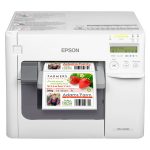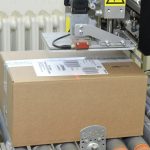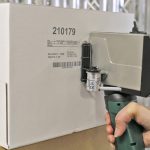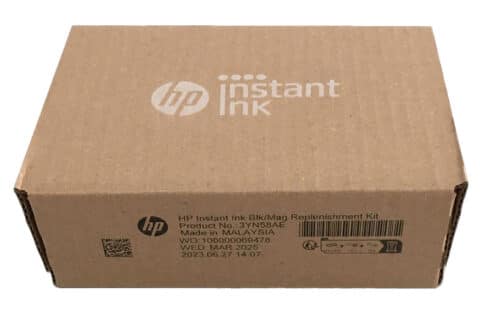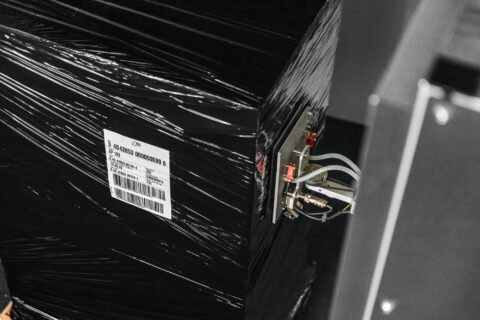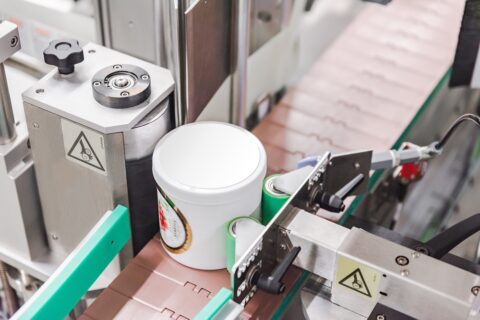Variable data labels are necessary to identify, track and authenticate products along the entire supply chain. They also help manufacturers optimize their operating costs and market their brand. They have amazing capabilities to boost your business!
As a specialist for product marking, Weber Marking Systems has more than 50 years of experience in all industries. In this article, we will tell you how several companies from the industrial sector and medium-sized businesses successfully use labels with variable data.
What are variable data on labels?

Variable data is the information on the label that relates to the individual product, a specific product group or a specific packaging unit and makes them uniquely identifiable. In other words, it is print data that varies from label to label.
The data usually comes from a database or an Excel spreadsheet and is added during the production or packaging process. Variable data are often encoded in the form of barcodes, data matrix codes or QR codes to make them machine-readable.
These are some examples of variable data on labels:
- Consecutive numbers
- Global Trade Item Number (GTIN)
- Individual order and production data
- Serial number
- Lot and batch number
- Promotion and winning codes
- Electronic Product Code (EPC)
- Serial Shipping Container Code (SSCC)
- Address data on dispatch labels
Trailblazers for industrial automation and digitalization
What does it need to make the vision of a smart factory – one that organizes and optimizes itself completely without human intervention – come to life? It takes AutoID technologies in order to enable life-less objects to ‘communicate’ with the machines and software throughout the production line. In the form of variable data labels, machine-readable data and unique identifiers can be applied to products and component parts. With the help of the Industrial Internet of Things (IIoT), those data can be used to auto-control the further manufacturing steps. One could say, variable data labels pave the way for highly flexible mass production!
For maximum efficiency, Weber Marking Systems provides labeling systems that come with state-of-the-art interfaces for easy integration into your IoT environment – allowing more productivity, deeper data insights and innovative remote services.
Make your logistics more efficient
Variable data labels accelerate the processes in warehouse, packaging and transport logistics. Here are some examples:

- Goods receipt: The scan of shipping labels triggers the goods receipt posting and initiates the printing of the storage label. The stock of goods is kept up-to-date and clearly arranged without great managing efforts.
- Handling returns: Labels with variable data allow product returns to be registered and processed more quickly. The returned goods can be resold faster.
 Warehouse logistics: Labels with variable data ensure proper inventory management and the optimal retrieval of goods, especially when there are many shelves and storage locations.
Warehouse logistics: Labels with variable data ensure proper inventory management and the optimal retrieval of goods, especially when there are many shelves and storage locations.- Inventory: Labels with variable data simplify the regular inventory of goods in stock. In particular, inventory labels with RFID technology can save a lot of time, nerves and costs in human resources.
- Commissioning: Labels with variable data ensure that the picker can easily find and compile the partial items of an order. Tight delivery deadlines can be better met.
- Sorting: Based on the variable data contained in a barcode label (e.g. the commissioning label), goods from the material flow are automatically diverted to specific sorting outlets.
 Goods issue: In order for staff to be able to check the order for quality and completeness, the shipping unit must be clearly marked with variable data.
Goods issue: In order for staff to be able to check the order for quality and completeness, the shipping unit must be clearly marked with variable data.- Transport: Labels with variable data enable the secure tracking of cartons and pallets leaving the warehouse. In external logistics, there is a particular need for unified and reliably legible labels that meet GS1 standards.
Enhance product traceability and brand protection
 Variable data labels make it possible to trace products seamlessly along the entire supply chain – from the delivery of raw materials to the sale to the end consumer.
Variable data labels make it possible to trace products seamlessly along the entire supply chain – from the delivery of raw materials to the sale to the end consumer.
This is particularly important for consumer protection when a product recall is necessary. By means of the variable data, manufacturers, traders and consumers can precisely limit the products concerned. In addition, the cause of the fault can be found more easily and rectified more quickly. This reduces the time and cost of product recalls. At the same time, variable data labels serve brand protection: Product markings offer original manufacturers effective measures against counterfeiting and block unjustified product liability claims.
The EU requires product traceability for certain product groups by law, including food, medicine and explosives. For example, every packaging for prescription drugs must carry a serial number, which is stored in the European Securpharm database. Pharmacists are to use it for authenticity checks before handing the drug over to patients.
By the way, more transparency in manufacturing is well received by consumers: A representative research study from Germany shows that 84% of consumers are willing to pay more for high-quality products – as long as they can trace information about the origin, sustainability and composition of the goods. Variable data are the ideal intermediaries for this. Although the research only relates to food, the findings can probably be extended to other industries.
Sophistify promotion information on sales packaging

Coupon codes and other promotional messages help move products off the shelf quickly. They encourage consumers to visit the company’s website, where they can enter their individual code to participate in a lottery, get a discount or else.
The code can be revealed on a peel-off label, for example. Multi-layered Booklet labels provide enough space for additional information (e.g. conditions of participation).
How to print variable data onto labels
If you want to create barcode labels and other labels with variable content by yourself, you can place and design the print data on the label layout using special label software. The variable positions are given a placeholder that is later filled with the respective data from the connected database.
- 6 tips for an error-free barcode
- Secure label printing in the food and pharmaceuticals industries
- Should you print barcodes horizontally or vertically?
- 5 tips on barcode colours
- BPA-free thermal paper required in EU from 2020
- Marking packaging alongside the production line
- Printing labels in-house: 5 reasons why it pays off!
Option 1: Indirect marking with labels
Label printers, which are either used in standalone mode or in a print & apply labeling system, print the variable data on the label by using thermal transfer technology. The label is then applied to the product by hand or by the applicator of the labeling system. Special label types such as RFID labels can also be used, but require RFID-capable systems.
Option 2: Direct marking with inkjet printers
Alternatively, variable data can also be applied to the labels or directly to the packaging by means of an inkjet printer. Direct marking methods can save costs compared to printing and applying labels. Check out our blog post about the comparison of labeling vs. printing methods on cardboard boxes.
Find more information about marking systems for variable data labels here:
Looking for the perfect labeling or printing solution?
Weber Marking Systems is your partner for demanding applications in all industries. We are happy to help you succeed! Ask us for more information and expert consultation:
Get in touch!


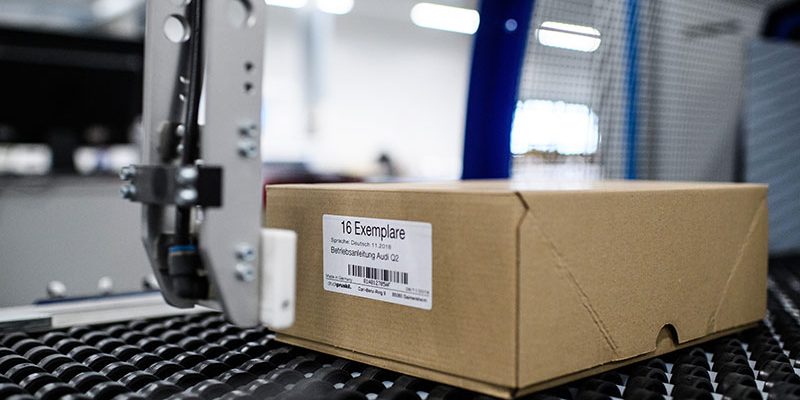
 Warehouse logistics: Labels with variable data ensure proper inventory management and the optimal retrieval of goods, especially when there are many shelves and storage locations.
Warehouse logistics: Labels with variable data ensure proper inventory management and the optimal retrieval of goods, especially when there are many shelves and storage locations. Goods issue: In order for staff to be able to check the order for quality and completeness, the shipping unit must be clearly marked with variable data.
Goods issue: In order for staff to be able to check the order for quality and completeness, the shipping unit must be clearly marked with variable data.
